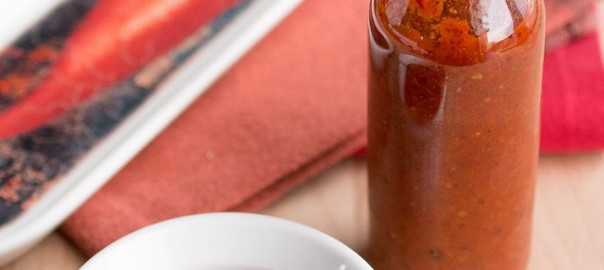
Low Carb Hot Sauces for Spicy Food Lovers
If you’re a low carb dieter who is in love with spicy food and powerful flavours, then the world of hot sauces can be a very fun place to play. There are so many different flavours and heat levels available, that no matter what you may be in the mood for, there’s a perfect hot sauce out there to kick up the taste and make your food even better.
It’s important to be aware that carbs aren’t just limited to the main foods on your plate. You can also find carbs in many condiments and sauces that you might decide to add to enhance the flavour of your food. Fortunately, most hot sauces are already very low in carbs, and several have none at all. In this article, we will look at the typical types of hot sauces and their ingredients, what kinds of foods are best suited for them, how they measure heat levels, and more.
Hot Sauce Ingredients
While there are thousands of different hot sauces on grocery store shelves around the world, the vast majority of them have one thing in common: The Chili Pepper. Most hot sauces from around the world use some type of chili pepper as their base ingredient, and then add other spices to change up the flavour and texture.
There are many different types of chili peppers, and each one has a unique flavour and hotness level that gives each hot sauce its own characteristics. Here are some of common chili peppers used in hot sauces:
- Cayenne
- Poblano (Ancho)
- Jalapeno
- Tabasco
- Habanero
- Chipotle
- Ghost Pepper
- Scotch Bonnet
In addition to the base ingredient of chili peppers, many other common hot sauce ingredients include vinegar, onions, tomatoes, citrus juice, garlic, carrots, and several types of herbs and spices such as salt, cumin, mustard powder, and oregano.
The vegetable ingredients are generally where carbs can add up in hot sauces, so a quick scan of the ingredient list will tell you where the carbs are coming from. Actual carb count of most hot sauces is typically very low, but there are some out there that actually achieve a zero-carb count, and so you can see why hot sauce is such a great fit for low carb dieters.
A couple of things to be cautious of when it comes to hot sauce is sugar and sodium. Some hot sauce varieties will have fruit ingredients such as honey or mango to add sweetness along with the heat, which adds to the sugar content of the hot sauce. In addition, some hot sauces can contain a lot of salt, so it’s important to pay attention to the sodium level when examining the nutrition labels of hot sauces. Too much sodium can be a bad thing, so it’s best to be sure before you buy.
Matching Hot Sauces and Foods
Sometimes hot sauces go wonderfully well with certain types of foods. Here are some of the best combos we know about:
- Milder hot sauces made from chipotle or ancho peppers are the perfect way to spice up a slice of pizza or for dipping your French fries, especially if the sauce happens to include garlic as one of its ingredients. Try this Garlic Hot Sauce from Hot Mamas.
- If Asian food is on the menu, pick up a bottle of Sriracha. It pairs well with all kinds of beef, pork, and seafood stir fry’s and is also great for dipping spring rolls and dumplings to add a nice kick.
- Buffalo wings wouldn’t be Buffalo wings without the sauce, but don’t limit this tasty sauce to only wings. Buffalo Wing sauce is really great on grilled chicken, or to add some spice to chicken sandwiches and wraps, too. Here’s a nice mild Buffalo sauce from Wing Time.
- Tabasco is renowned around the world as a universal hot sauce, and is great on almost anything. If you happen to be mixing up some Bloody Mary’s or Bloody Caesars, Tabasco is a great choice to add some heat to these drinks.
- Habanero and Jalapeno hot sauces are fantastic on meat from the grill. If you’re cooking up some burgers, try spreading a spoonful on the burger while it’s still cooking, or pile it on a sausage or hot dog for a spicy treat.
- Common chili sauce is an excellent choice for foods where you don’t want too much heat, but instead are looking for a milder spicy flavour. Try adding chili sauce to things like scrambled eggs or mac and cheese for a new flavour experience. Try this Chili Sauce from Jok’N’Al
Rating the Heat of Hot Sauces
If you’re really interested in learning the science of hot sauces, then you need to know about the Scoville Scale. This measurement system was developed by Dr. Wilbur Scoville and measures the power of spiciness by the amount of ‘capsaicin’ chemicals, which are what actually gives the peppers their heat, and represents them as Scoville Heat Units (SHU).
There are many resources online that list different peppers and brands of hot sauce by their Scoville Scale ratings. Here’s one that lists hot sauces as well as hot peppers:
ChiliWorld.com – Scoville Heat Scale for Hot Sauces and Hot Peppers
The mildest sauces that can still be officially called hot sauces will typically come in at around 1,200 to 1,500 SHU. Hot sauces made from Habaneros climb up to around 8,000 to 12,000 SHU. The sky is the limit though, and hot sauce aficionados around the world continue to crank out crazy recipes to see just how hot their sauces can get. One of the hottest sauces in the world sits at a ridiculous 16 million SHU. At that level, the sauce is basically just pure fire!
Hot Sauce and the Low Carb Diet
Interestingly, it’s been reported by many newcomers to the low carb diet that they experience a stronger craving and affinity for spicy foods when they start cutting out carbs from their diets.
Considering that hot sauces are typically low in carbs anyway, this makes them a perfect fit as a part of a low carb diet. Spicy food lovers don’t need to worry about whether going low carb will mean cutting out the heat, because hot sauce is well suited to low carb foods. In addition, hot sauce is one of those products that you can really explore a wide variety of choices since it is so easy to order online, try new flavours, and read up from other foodies on their favourite hot sauces.
Check out our wide range of hot sauces today, online or in store at The Low Carb Grocery!






